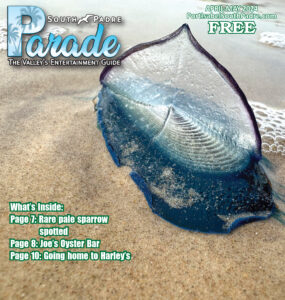By STEVE HATHCOCK
Special to the PRESS
It’s surprising how we can take for granted some of the most mundane inventions, such as the common button. But the button has not always been so common and few people realize they have a history dating back many thousands of years.
Primitive man used thorn and sinew or slivers of bone to hold their clothing together and buttons have been known to exist as far back as the Bronze Age, when they were worn as ornamentation to decorate belts and other metal objects. Though the Egyptians used cloth ties, broaches or buckles to hold their clothes together, the early Greeks and Romans are generally credited with making buttons specifically to fasten clothing. Each one was handcrafted and only the rich and powerful could afford the luxury.
It wasn’t until the late 1200s, when form fitting clothes became the fashion, that buttons became popular as both a clothes’ fastener and a fashion statement.
Men competed to see who had the largest or the most intricate buttons. They were used by nobility and made of silver and gold with exquisite paintings. They were carved, inlaid, stamped and covered with exotic fabrics. Craftsmen were hired just to make buttons. In fact, the surname, Button and its variation of Butner, both of which originated in medieval England, means maker or seller of buttons. After he succeeded Louis XII, as King of France, Francis I, (1494-1547) had 13,600 gold buttons placed on a single costume.
Though Paul Revere was noted for producing fine silver buttons, prior to the Revolutionary War, most buttons used in America were actually imported from France.
The most sought-after of the early American buttons are those made for George Washington’s first and second inaugurations. Hand stamped in copper, brass, or Sheffield silver plate, they are known to exist in 22 different patterns.
Buttons were so expensive during the early 19th century that they would routinely be removed from worn-out clothing to be reused on new garments. Efforts were made to find a cheaper material to manufacture buttons for the masses. Low denomination coins with loops of brass or copper soldered on one side were commonly used when no substitute could be found. These were hard to work with and labor intensive to make, which still put them out of the reach of the ordinary citizen.
In 1802, Abel Porter established a company in New England to make metal buttons. The first were cast of soft metal but the wire thread quickly wore through the metal eye. Porter eliminated the problem by casting brass wire loops in his buttons. The firm, which later became Scovills & Company, became famous for making a set of solid gold buttons bearing a profile of George Washington in relief. The set was presented to Marquis de Lafayette during his visit to this country in 1824.
In the 1840s, hard, rubber buttons were tried, but they had a tendency to become brittle with age. Celluloid, a synthetic developed to replace ivory in the manufacture of billiard balls, was first used for button making in the early 1870s. Missionaries carried buttons to the most remote corners of the earth so they could “clothe the heathens.”
The most popular buttons at the turn of the century were picture buttons often worn in long rows down the front of coats or dresses, picturing everything imaginable. During the Roaring Twenties, flappers wore garter buttons often featuring the face of Betty Boop or popular movie stars of the time. Then there were the novelty buttons that first appeared during the Depression. The plastic button was cheap and might look like a cigarette pack or a basket of fruit or the increasingly popular Mickey Mouse. When families gathered around the radio for entertainment, they might hear the voice of Mrs. Gertrude Patterson, a noted button collector who inspired people to begin searching attics and old pin boxes for tiny treasures. It was a diversion people could afford.
During World War II, patriotic buttons appeared: eagles, flags, stars. And in England, “blackout buttons” which radiated light became tiny heroes, attached to the lapel and back of those on the dim home-front. After the war, materials shortages resulted in buttons made of everything from paper pulp to rabbit fur.
Today, thanks to new synthetics, we find buttons of every size, shape and design imaginable, at a price we can all afford and few households don’t have a jelly jar full of old buttons just waiting to be reused.
Want the whole story? Pick up a copy of the Port Isabel-South Padre Press, or subscribe to our E-Edition by clicking here.



Comments